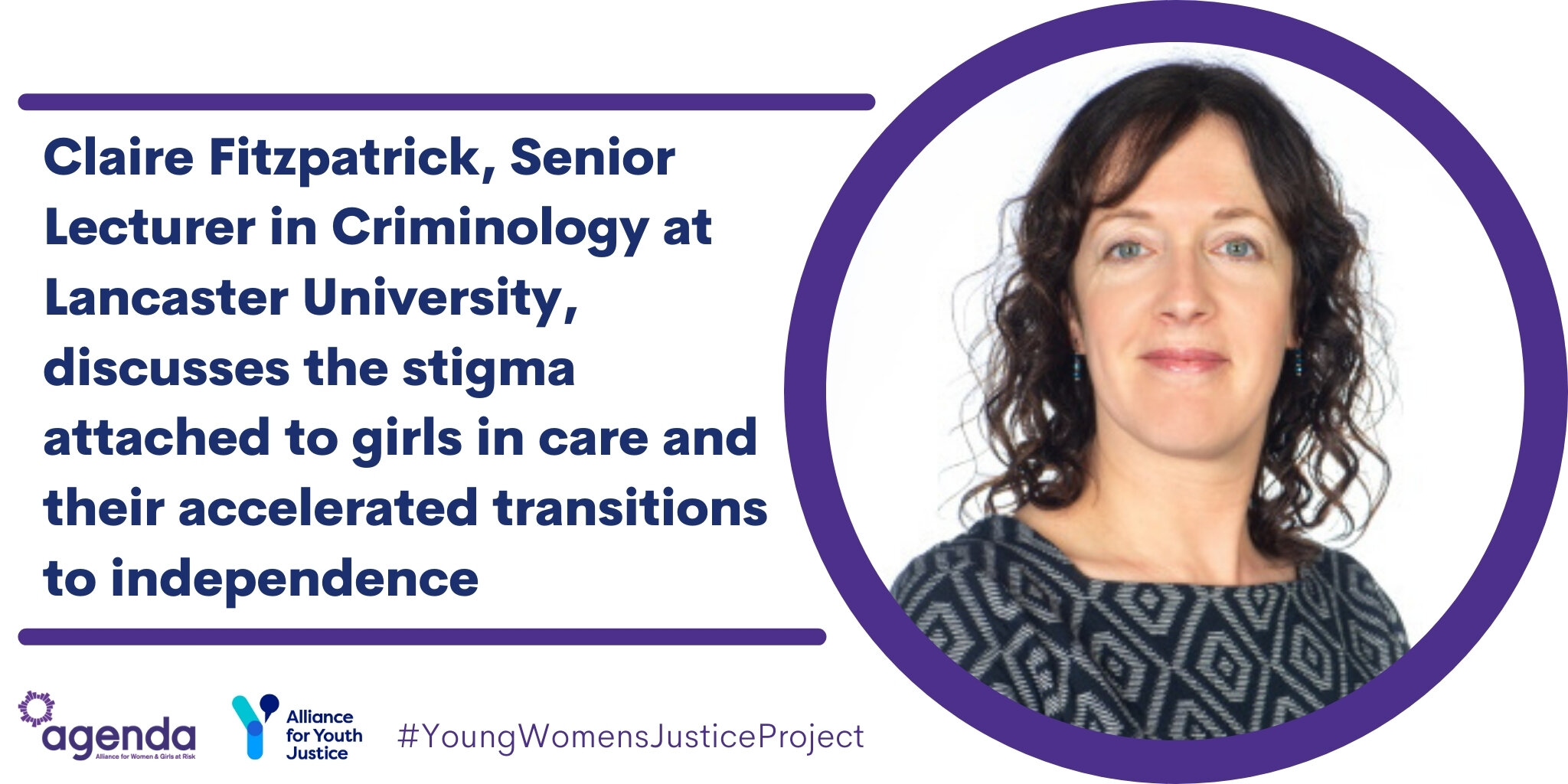Transitions for care experienced girls and young women - Dr Claire Fitzpatrick
Many children in care do not come into conflict with the law, and do well despite serious failings in our systems. Whilst over 60% of children are looked after in England principally due to ‘abuse or neglect’ (DfE, 2018), just 1% of children enter care specifically because of their own behaviour, despite popular perceptions continuing to link care experience with trouble. Yet, there is a stubborn over-representation of looked after children and care leavers in the criminal justice system, which is particularly stark for girls and women.
As the leaving care age is 18 in England, girls in care will often experience compressed and accelerated transitions to independence compared to peers in the general population. Whilst those in foster care may have the option to stay on with their carer until 21 under staying put arrangements, this is not possible for those in children’s homes. Semi-independence accommodation is often woefully inadequate.
Leaving care legislation is complicated with support only available to those categorised as ‘eligible’, ‘relevant’ or ‘former relevant’. This legal terminology is hardly a means of encouraging practitioners to keep the human being in mind (Fitzpatrick, 2020). The complicated legislation is a particular problem for children in trouble, as justice professionals may lack knowledge and understanding of care issues.
The stigma attached to being in care and associated judgements may impact particularly on care-experienced girls and young women. Whilst moral judgements might be made of all girls in a patriarchal society, negative judgements of girls in care can be layered on top of this as a result of their looked after status, with ethnicity adding another potential layer of disadvantage for some.
Current concerns about unnecessary criminalisation of children in care (Prison Reform Trust, 2016) reveal that care-experienced girls in conflict with the law may be more likely than other girls to be perceived as potential offenders. By contrast, those from so-called ‘chaotic backgrounds’ may be less likely to be viewed as genuine or deserving victims, with child sexual exploitation scandals highlighting how vulnerable girls at risk of exploitation were reclassified as teenagers out of control (Jay, 2014).
There is a clear need to raise aspirations of girls in care, and challenge negative judgements and language. These judgements can impact how far girls in care are viewed as genuine victims, potential offenders, or potentially poor parents, and can have an impact across generations.
Girls and women in conflict with the law are particularly likely to have experienced instability and movement in care through different placement changes – potentially leading to uncertainty and a lack of trust due to the ever-changing number of professionals involved in their lives. They may need support with their mental health, but such support is seriously limited (Fitzpatrick et al, 2019).
Identifying a prior care status amongst those in custody who have left care can be a huge challenge. Not doing so means young women could miss out on leaving care support that they are entitled to. If care-experienced girls and young women are placed in custody out of area, (highly likely given the lack of provision), information about their welfare needs is less likely to be shared in a timely matter, with some feeling abandoned by their local authority when serving a prison sentence.
Effective communication between leaving care advisors and offender managers is often very difficult when individuals are imprisoned. However, care pathway plans and prison resettlement plans for young women offer an ideal place for joined up working and communication to occur. Whilst some care-experienced girls and women in trouble can be seen by professionals as “hard to reach” and “difficult to engage”, we need to turn such language on its head (Fitzpatrick, 2020). Perhaps these phrases do not best describe individuals, but the services and systems that are supposed to support them.
Find out more about girls and young women’s transitions to the adult justice system in the Young Women’s Justice Project briefing Falling Through the Gaps.
Funded by Lloyds Bank Foundation and run in partnership by Agenda and the Alliance for Youth Justice (AYJ), the Young Women’s Justice Project provides a national platform to make the case for the needs of young women aged 17–25 in contact with the criminal justice system, including of the needs of girls transitioning into adult services as they turn 18.
We are keen to continue collaborating with others working in this space, with both lived and learned experience of the issues. If you work with girls and young women in contact with the criminal justice system and would like to get involved, please contact maggie@weareagenda.org.





